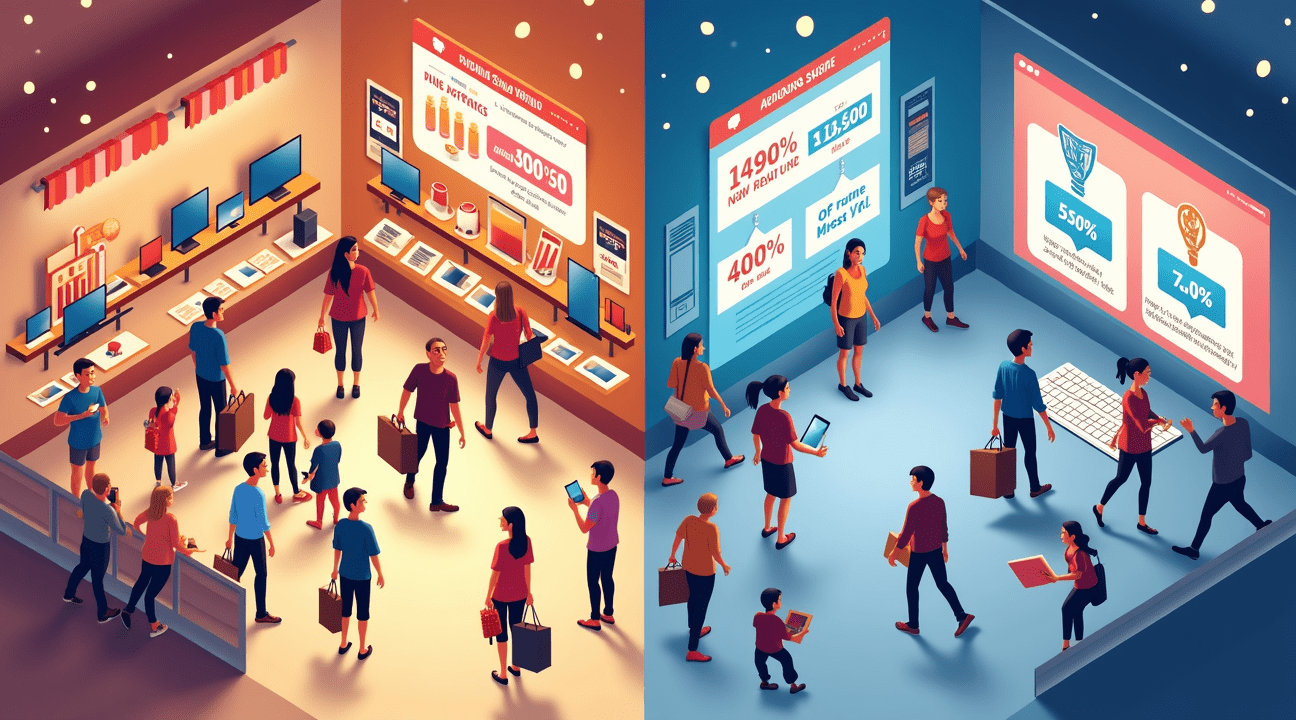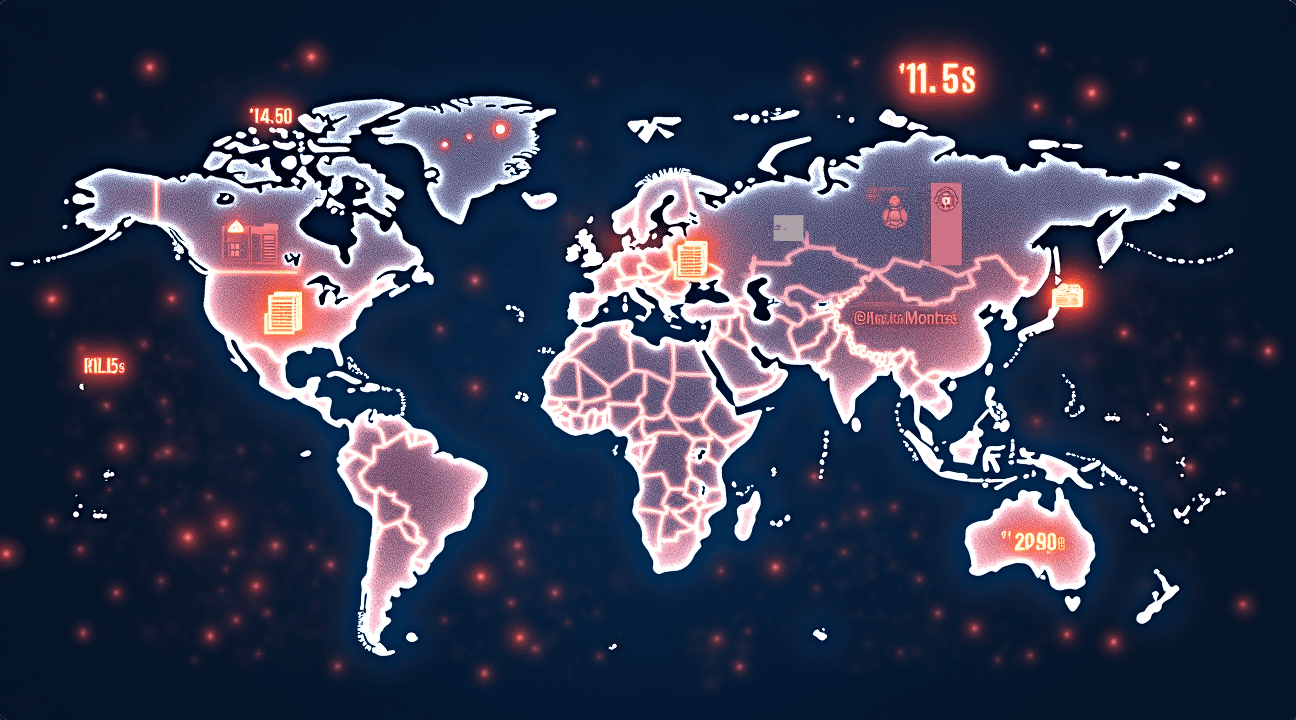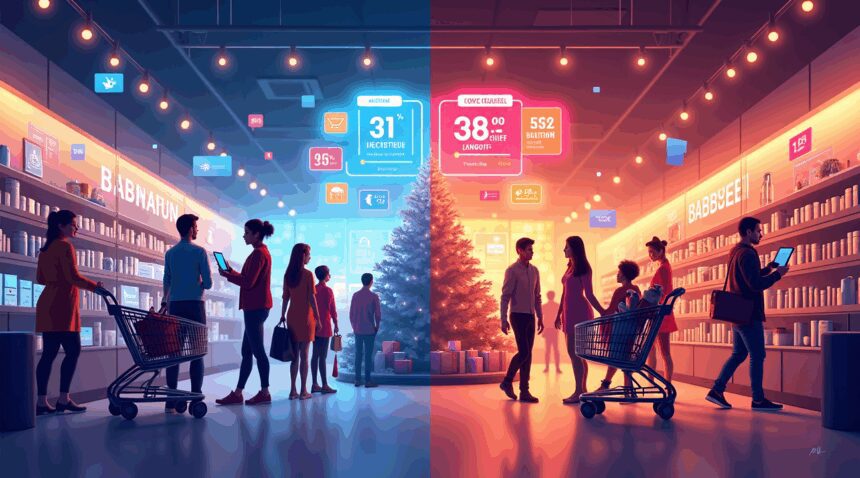Black Friday 2024 generated unprecedented shopping opportunities, with U.S. online sales reaching $10.8 billion and global sales hitting $74.4 billion during the extended shopping period. Success in maximizing these deals requires strategic preparation, smart timing, and understanding how the shopping landscape has evolved beyond a single day into a comprehensive season of savings opportunities.
Key Takeaways
- Research and prepare early – Use price tracking tools weeks before Black Friday to establish baseline prices and identify genuine deals versus inflated “original” pricing
- Embrace mobile-first shopping strategically – While 71% of sales occur on mobile devices, desktop browsers offer better conversion rates (6.5% vs 3.2%) for final purchases and deal verification
- Focus on high-discount categories – Electronics typically offer up to 30% off, while clothing and accessories attract the most shoppers and maintain competitive pricing throughout the weekend
- Leverage the extended shopping season – Take advantage of early access deals in October, Black Friday doorbusters, Small Business Saturday, and Cyber Monday to maximize opportunities across multiple events
- Stick to trusted retailers and verify deals – Shop through official retailer pages, use reputable price comparison tools, and monitor social media for exclusive flash sales while avoiding suspicious links and fake discount traps
The 2024 shopping data reveals a fundamental shift in consumer behavior that smart shoppers can exploit for maximum savings. Modern Black Friday extends far beyond its traditional 24-hour window, creating multiple touchpoints for strategic purchasing decisions.
Use Price Tracking Tools Early
Price tracking tools become essential weapons in any shopper’s arsenal. Platforms like CamelCamelCamel, Honey, and similar services reveal pricing patterns that help distinguish authentic discounts from artificial markups. Smart retailers often inflate prices weeks before Black Friday, then advertise hefty discounts that barely reduce items below their regular selling price. Starting research six weeks early reveals these patterns and identifies products genuinely worth buying.
Optimize Desktop Shopping
Mobile shopping dominates transaction volume, but desktop shopping delivers superior performance for serious deal hunters. Mobile devices excel for quick purchases and impulse buying, yet desktop computers provide better visibility for price comparisons, multiple tab management, and faster checkout processes. The conversion rate difference suggests desktop users complete purchases more deliberately and successfully.
Target Key Shopping Categories
Electronics maintain their position as the highest-discount category, but clothing and accessories generate the most traffic. Electronics retailers often clear inventory aggressively during Black Friday, creating legitimate opportunities for substantial savings on laptops, smartphones, and home appliances. Clothing retailers rely more on volume than margin compression, meaning discounts may appear impressive while actual savings remain modest.
Plan for the Full Season
The extended shopping season rewards patience and timing. Early access deals in October often match or exceed Black Friday pricing without the competition and website crashes. Cyber Monday traditionally focuses on digital products and services, while Small Business Saturday supports independent retailers with unique inventory. Each event serves different shopping goals and product categories.
Verify Source and Security
Verification prevents costly mistakes and security breaches. Official retailer websites guarantee authentic products and proper warranty coverage, while third-party marketplace sellers may offer counterfeit goods or gray market items. Social media flash sales can provide exclusive opportunities, but require careful link verification to avoid phishing attempts and fraudulent websites.
Use Browser Extensions for Safety and Savings
Browser extensions help streamline the verification process by automatically checking prices across retailers and alerting shoppers to suspicious websites. Chrome extensions like Rakuten and Capital One Shopping integrate seamlessly with major retailers while providing real-time price comparisons and cashback opportunities.
Conclusion: Preparation Pays Off
The data strongly suggests that preparation trumps spontaneous shopping for Black Friday success. Shoppers who track prices consistently, verify retailer credibility, and plan purchases strategically consistently outperform those who rely on day-of browsing. Modern Black Friday rewards research and patience over speed and impulse decisions.
How to Maximize Your Savings with $10.8 Billion in Black Friday Opportunities
Black Friday has evolved into the shopping phenomenon of the year, with an impressive 79% of shoppers considering it their primary shopping event. U.S. online sales alone reached a staggering $10.8 billion in 2024, marking a 10.2% increase from the previous year. Globally, this shopping extravaganza generated $74.4 billion in sales during the Black Friday period, creating unprecedented opportunities for savvy shoppers to secure extraordinary deals.
The shopping landscape has transformed significantly, with Black Friday now extending far beyond a single day. This expanded timeframe presents multiple opportunities to maximize savings across different events and platforms. Understanding the shopping patterns of fellow consumers can help position you for the best deals available.
Strategic Timing for Maximum Impact
Consumer behavior reveals fascinating patterns that smart shoppers can leverage. Approximately 45% of consumers begin their holiday shopping on Black Friday itself, creating intense competition for the most popular items. However, I’ve observed that 9% of strategic shoppers start as early as October, often securing early access deals before the main rush begins.
For those who prefer less crowded shopping experiences, 12% of consumers wait until December, when retailers often offer additional clearance sales to move remaining inventory. This approach can yield surprising savings on items that didn’t sell during the initial Black Friday rush.
The key to success lies in understanding that Black Friday has expanded into a comprehensive shopping season. Thanksgiving Day now features significant online deals, while Small Business Saturday supports local retailers with unique offerings. Cyber Monday continues the momentum with technology-focused promotions, creating a four-day shopping marathon.
Leveraging the Extended Black Friday Season
Modern retailers have embraced week-long campaigns and early access offers as standard practice. These extended periods provide multiple opportunities to compare prices and secure the best deals without the pressure of single-day shopping. Early access programs, often available to loyalty members or email subscribers, frequently offer the same discounts with less competition.
I recommend monitoring retailers throughout October and November for pre-Black Friday promotions. Many stores release their full Black Friday ads weeks in advance, allowing you to plan your shopping strategy and identify which items warrant waiting for potential deeper discounts.
Here are some effective strategies to help you navigate the extended Black Friday season:
- Use price tracking tools and apps to monitor desired items across multiple retailers.
- Set up alerts for specific products to get notified when prices hit all-time lows.
- Create a prioritized shopping list to stay focused and avoid impulse purchases.
- Diversify your shopping across different days and both major and smaller retailers.
Consider taking advantage of deals from alternative sources. While major retailers dominate Black Friday, deals after the holiday and during Cyber Monday from smaller retailers can be just as valuable. Hidden ways to save money often emerge from these less obvious sources.
The rise of mobile shopping has created additional opportunities for exclusive app-only deals and location-based promotions. Many retailers offer special discounts for customers who download their apps or enable location services, providing access to deals not available through traditional shopping methods.
Social media platforms have become valuable sources for flash sales and exclusive discount codes. Following your favorite retailers on these platforms can provide early notifications about limited-time offers that aren’t widely advertised.
Remember that the best Black Friday strategy combines patience, preparation, and flexibility. While the $10.8 billion in U.S. online sales demonstrates the enormous scale of opportunities available, success comes from strategic planning rather than impulsive shopping. The extended nature of modern Black Friday season means you have multiple chances to secure excellent deals without the stress of missing out on a single day.

Your Essential Game Plan: Research, Budget, and Mobile Strategy
Building a winning Black Friday strategy starts with solid research. I can’t stress enough how critical this foundation becomes—82% of Gen Z shoppers and most U.S. consumers research online before making a purchase, examining prices, reviews, and promotions to identify the best Black Friday deals. This approach prevents impulse purchases and ensures you’re getting genuine value rather than flashy marketing.
Mobile-First Shopping Revolution
Your smartphone isn’t just convenient—it’s essential. Mobile shopping dominated Black Friday 2024, with 71% of online sales occurring through mobile devices. Nearly 70% of U.S. online shoppers used their phones for gift purchases, making mobile optimization a game-changer for deal hunters. I recommend downloading retailer apps before the shopping frenzy begins, as many offer app-exclusive deals and faster checkout processes.
Smart Budgeting and Category Focus
Setting a clear budget prevents overspending during the excitement. Average U.S. spending per person reached about $480 in 2024, though historical averages have ranged from $321 to $650. Your budget should reflect your financial situation, not marketing pressure.
Focus your energy on categories offering maximum discounts:
- Electronics: Typically offer up to 30% off, ideal for major savings
- Clothing and Accessories: Attracted 72% of consumers
- Cosmetics: Appealed to 23% of shoppers
These statistics reveal where retailers compete most aggressively for market share.
I suggest creating a prioritized list before shopping begins:
- Identify must-have items versus nice-to-have purchases
- Research regular prices in advance
- Use price tracking tools and browser extensions to check historical pricing data
Consider timing your purchases strategically. While electronics and major appliances often see their deepest discounts on Black Friday itself, clothing and accessories frequently maintain competitive pricing throughout the entire weekend. This knowledge helps you plan which items to pursue immediately versus those you can purchase later.
Remember that research extends beyond pricing. Read recent reviews, check return policies, and verify warranty terms before committing to purchases. Many hidden ways to save money exist through cashback programs, credit card rewards, and loyalty programs that amplify your Black Friday savings when combined strategically.
Successfully executing your Black Friday game plan requires preparation, discipline, and mobile readiness. By researching thoroughly, setting realistic budgets, and focusing on high-discount categories, you’ll maximize your savings while avoiding common shopping pitfalls.
Black Friday vs. Cyber Monday: Which Day Delivers Better Value
The numbers tell a compelling story about these two shopping phenomena. U.S. online sales for Cyber Monday reached $13.3 billion, significantly outpacing Black Friday’s $10.8 billion in digital transactions. Yet Black Friday maintains its edge through sheer shopping volume, attracting 87.3 million online shoppers and 81.7 million in-store customers who appreciate the hybrid shopping experience.
Discount Depth and Categories Matter
Black Friday consistently delivers deeper savings across most product categories. The average discount hovers around 31%, which typically exceeds what retailers offer during Cyber Monday, particularly for electronics and big-ticket items. This discount advantage becomes even more pronounced when shoppers combine online deals with in-store promotions, creating opportunities for hidden ways to save money through price matching and stacking offers.
Electronics dominate both days, but the approach differs significantly:
- Black Friday focuses on major appliances, televisions, and gaming consoles.
- Cyber Monday emphasizes smaller tech items, software, and digital subscriptions.
Apparel and home goods see their strongest discounts during Black Friday, making it the prime time for seasonal wardrobe updates and home improvement projects.
Consumer Preferences Split Nearly Even
Shopping preferences reveal an interesting division: 45% of consumers favor Black Friday, while 46% lean toward Cyber Monday for online-exclusive deals. This near-split reflects different shopping personalities — those who enjoy the traditional retail experience versus digital-first consumers who value convenience and exclusive online offers.
The planning data shows more shoppers intend to make purchases during Black Friday, driven by the broader selection of discounted categories beyond just electronics. This aligns with the e-commerce boom that has transformed how retailers structure their promotional calendars.
Smart shoppers often use both days strategically:
- Black Friday is ideal for larger purchases where store pickup saves on shipping.
- Cyber Monday is perfect for snagging smaller items, digital products, and last-minute additions to holiday lists.
The key lies in identifying which retailers offer their best deals on which day, as some brands reserve their deepest discounts exclusively for one event over the other.
Timing plays a crucial role in maximizing value. Black Friday deals often start earlier in November with doorbusters available in limited quantities, while Cyber Monday tends to feature more consistent pricing throughout the day with better stock availability for popular items.

Smart Shopping Tactics for Online and In-Store Success
Successful Black Friday shopping requires strategy that goes far beyond simply showing up at stores or clicking “add to cart” online. I’ve discovered that the most effective approach combines careful preparation with smart timing and payment choices that maximize every dollar spent.
Price Comparison and Research Strategies
Price comparison forms the foundation of smart Black Friday shopping. I recommend using online tools and trackers weeks before the event to establish baseline prices and identify genuine bargains versus marketing hype. Hidden money-saving strategies often include cross-referencing prices between Amazon and other major retailers during your research phase.
The practice of showrooming—researching products online before making in-store purchases—has become standard among savvy shoppers. I suggest checking product reviews, specifications, and pricing on multiple platforms before committing to any significant purchase. This approach helps distinguish between legitimate discounts and inflated “original” prices that make modest reductions appear more substantial than they actually are.
Building relationships with retailers proves particularly valuable during Black Friday season. Recent data shows that 48% of shoppers prefer stores that close on Thanksgiving while offering strong online deals instead. This preference highlights how loyalty programs and customer relationships have evolved beyond traditional in-store experiences.
I recommend taking the following steps to get the most out of your research:
- Sign up for loyalty programs early in the year for access to exclusive deals
- Track item prices several months before Black Friday to establish true deal baselines
- Use browser extensions and alerts for quick price drop notifications
Strategic Timing for Store Visits and Online Shopping
The traditional image of predawn lines outside stores has largely become outdated. Current foot traffic patterns show peak shopping times occurring from mid-morning to late afternoon, which means early morning queues carry less importance than they once did. I’ve found that arriving at stores during off-peak hours—either very early or later in the evening—often provides a more comfortable shopping experience with better customer service.
Online shopping timing requires different considerations. E-commerce opportunities continue expanding, with many retailers launching deals throughout the week rather than concentrating everything on Friday itself. I monitor retailer websites and apps for flash sales and limited-time offers that may provide better discounts than the main event.
Here are some tips to optimize your timing:
- Check for early access deals offered to loyalty members
- Monitor app-exclusive deals, often updated nightly or early morning
- Use email alerts or social media updates for flash-sale announcements
Buy Now, Pay Later (BNPL) services have transformed how consumers approach Black Friday purchases. The payment method generated $686.3 million in transactions on Black Friday alone, with $18.2 billion processed throughout 2024. I recommend understanding BNPL terms completely before using these services, as they can enable larger purchases while spreading payment obligations across several months.
Smart shopping also involves knowing when to shop online versus in-store. Certain categories consistently offer better deals through specific channels—electronics often provide deeper online discounts, while clothing and accessories may present better in-store opportunities for trying items on and avoiding return complications.
I’ve learned that successful Black Friday shopping requires treating it as a year-long strategy rather than a single-day event. This approach includes tracking prices throughout the year, building wish lists during slower shopping periods, and maintaining awareness of which retailers consistently offer the best deals in your preferred categories.
The key lies in balancing preparation with flexibility, allowing you to capitalize on unexpected opportunities while avoiding impulse purchases that drain your budget without delivering real value.
Where the Money Flows: Top Retailers and Trending Products
Black Friday’s financial landscape reveals some fascinating patterns that I believe every shopper should understand before diving into the deals. Shopify merchants alone recorded $11.5 billion in sales during the 2024 Black Friday-Cyber Monday period, representing a massive 24% increase from the previous year. This explosion in sales demonstrates just how much opportunity exists for savvy shoppers who know where to look.
Record-Breaking Retail Performance
Over 67,000 Shopify-owned stores experienced their highest ever sales days during this period, creating an unprecedented competitive environment for deals. Amazon dominated the marketplace, representing 17.7% of all Black Friday sales, which means serious bargain hunters can’t afford to ignore the retail giant’s offerings. However, I’ve found that the real treasures often hide in smaller retailers who push harder to compete against these industry leaders.
Cross-border transactions made up 16% of all orders, with the U.S., UK, Australia, Canada, and Germany leading international shopping activity. This trend opens doors for shoppers willing to explore international retailers, though I recommend checking shipping costs and return policies before committing to hidden ways to save money through cross-border purchases.
Product Categories That Deliver Maximum Value
Electronics, apparel, accessories, and home goods remained the most popular product categories, but understanding why helps shoppers strategize better:
- Electronics: Typically offer the deepest percentage discounts because retailers use them as loss leaders to drive traffic.
- Apparel: Sees significant markdowns as retailers clear seasonal inventory.
- Home Goods: Benefit from holiday decorating and gift-giving trends.
I’ve noticed that consumers utilized social media (36%) and direct online stores as their primary sources for locating top deals, which highlights an important shift in shopping behavior. Social media platforms now serve as deal discovery engines, with retailers posting exclusive flash sales and limited-time offers that don’t appear elsewhere.
The surge in e-commerce boom activity during Black Friday demonstrates how digital-first strategies consistently outperform traditional approaches. Smart shoppers leverage multiple channels simultaneously, comparing prices across platforms while monitoring social media feeds for time-sensitive opportunities.
Retailers understand that modern consumers research extensively before purchasing, which explains why they’re investing heavily in targeted advertising and influencer partnerships. I recommend following your favorite brands on social platforms weeks before Black Friday to catch early access deals and insider information about upcoming sales.
Don’t overlook independent retailers. Amazon’s massive market share doesn’t mean shoppers should limit themselves to one platform. Independent retailers often match or beat Amazon’s prices while offering superior customer service and unique products. Direct-to-consumer brands frequently provide their best deals exclusively through their own websites, bypassing marketplace fees to pass savings directly to customers.
The international shopping trend creates opportunities for accessing products unavailable in domestic markets, often at better prices due to currency fluctuations and regional pricing strategies. However, I always factor in shipping times and potential customs fees when evaluating international deals.
Tips for Smart Black Friday Shopping:
- Create wish lists on multiple platforms.
- Set up price alerts to track fluctuations.
- Monitor retailers’ websites and social media feeds frequently.
- Look out for early bird specials, Black Friday deals, and Cyber Monday clearances.
- Factor in hidden costs like shipping and returns, especially with international orders.
Understanding retailer psychology helps shoppers time their purchases effectively. Companies often release their best deals in waves, starting with early bird specials, ramping up on Black Friday itself, and finishing with Cyber Monday clearance events. This pattern creates multiple opportunities for finding the same products at different price points, rewarding patient and strategic shoppers who monitor trends rather than making impulse purchases.

How to Spot Real Deals and Avoid Shopping Traps
I recognize that navigating Black Friday can feel overwhelming when only 51% of global online shoppers report they completely or mostly trust Black Friday offers. This skepticism exists for good reason — many advertised discounts aren’t as genuine as they appear.
The most effective approach starts with sticking to official retailer pages and trusted deal aggregators. I always verify that I’m shopping directly through established merchant websites rather than clicking suspicious links from unknown sources. Third-party deal aggregators with solid reputations can help streamline the search process, but I make sure they redirect to legitimate retailer sites for actual purchases.
Price tracking becomes essential when determining whether that “70% off” sticker represents actual savings. Many retailers inflate original prices weeks before Black Friday, then apply discounts to create the illusion of massive savings. I recommend using price history tools to monitor products over several weeks or months. This practice reveals whether the current “sale” price actually beats previous offers or if it’s simply regular pricing dressed up with marketing hype.
Understanding Shopping Behavior and Platform Differences
Shopping platform choice significantly impacts both experience and success rates. Desktop users converted purchases at a rate of 6.5%, while mobile users achieved only a 3.2% conversion rate, despite most traffic originating from mobile devices. This disparity suggests several key strategies:
- Desktop browsers provide better comparison shopping capabilities
- Larger screens make it easier to read fine print and terms
- Desktop environments typically offer more stable checkout processes
- Mobile users often browse but complete purchases on desktop later
I find that using mobile devices for initial browsing and price comparison works well, but switching to desktop for final purchases reduces technical issues and improves deal verification. Mobile apps sometimes hide important details or make it difficult to cross-reference prices across multiple retailers.
Fake discounts represent one of the most common shopping traps during Black Friday. Retailers might display original prices that were never actually charged, create artificial scarcity with countdown timers, or bundle unwanted items to inflate perceived value. I always research normal pricing for items I want before the sales period begins.
Another critical factor involves understanding hidden ways to save money beyond headline discounts. Many genuine deals hide in lesser-promoted sections, early access periods, or through specific discount codes that require digging deeper than surface-level browsing.
Shopping safety extends beyond price verification to include secure payment methods, verified seller credentials, and clear return policies. I prioritize retailers with established customer service records and transparent refund processes, especially for larger purchases where shopping traps could result in significant financial loss.

Sources:
Cropink – Black Friday Sales Statistics
Shopify – Black Friday Ecommerce
Statistics.blackfriday
Consumer Decisions – Black Friday Facts & Statistics
Analyzify – Black Friday Statistics
Statista – Global Online Shoppers Trust Black Friday Offers
Wisernotify – Black Friday Statistics


